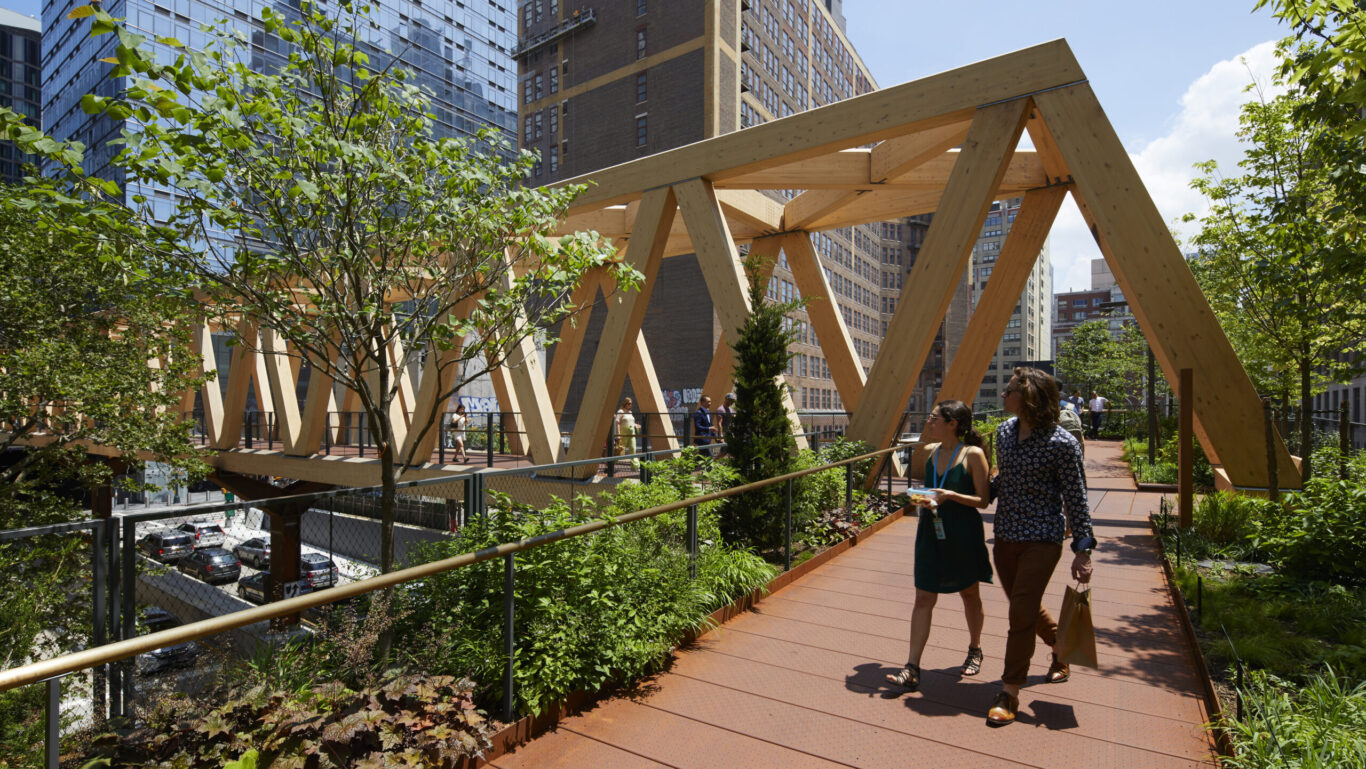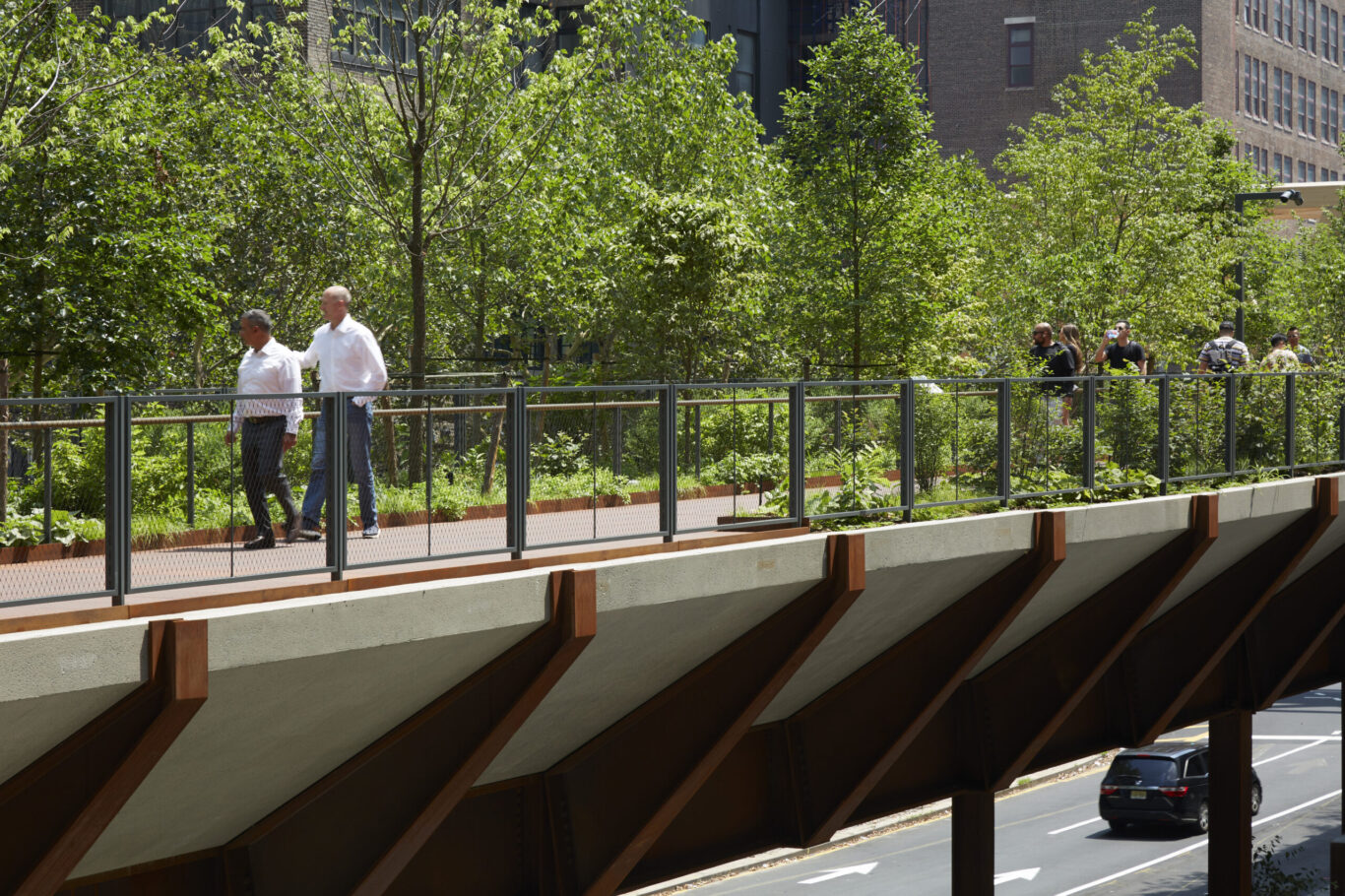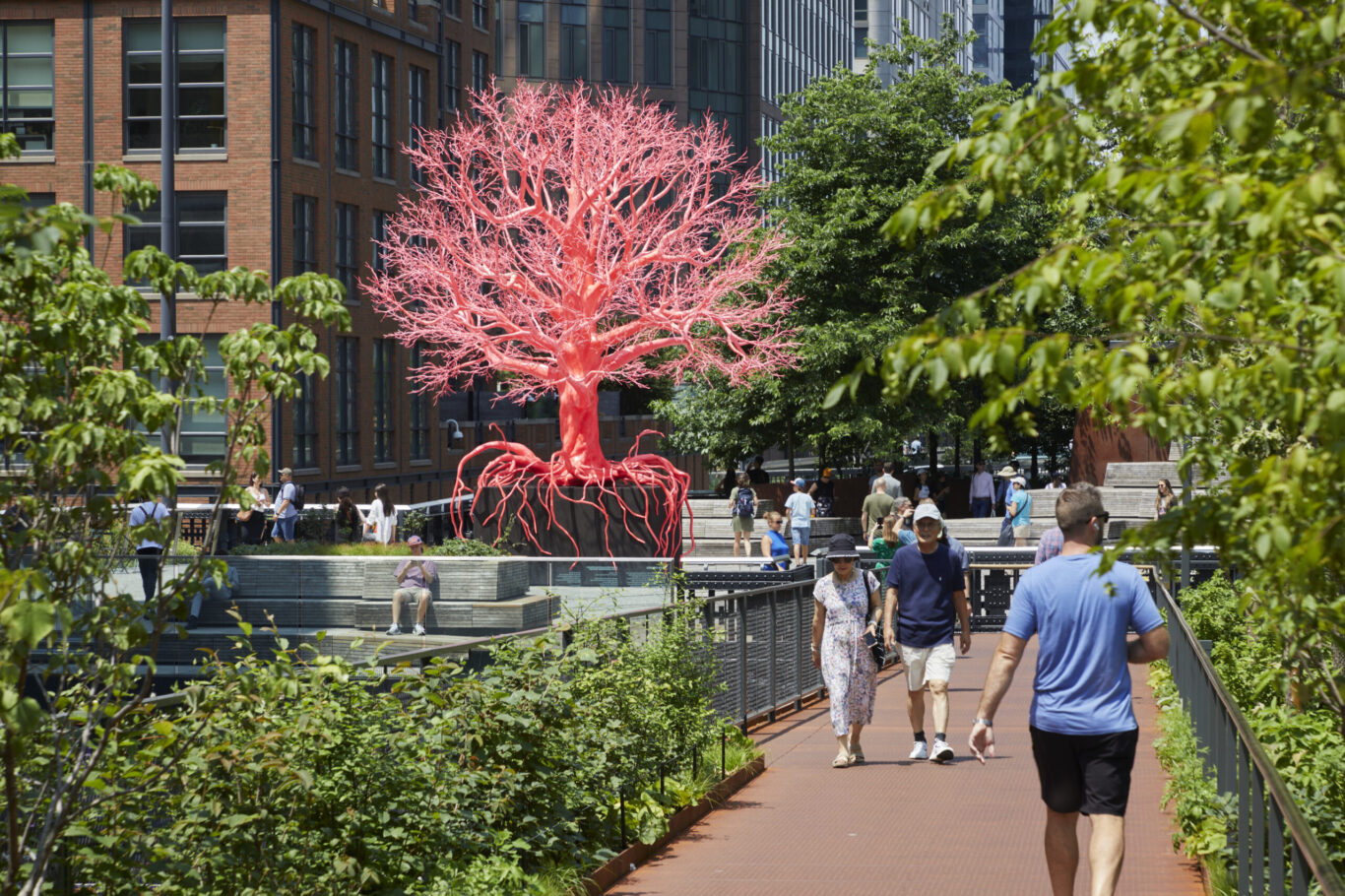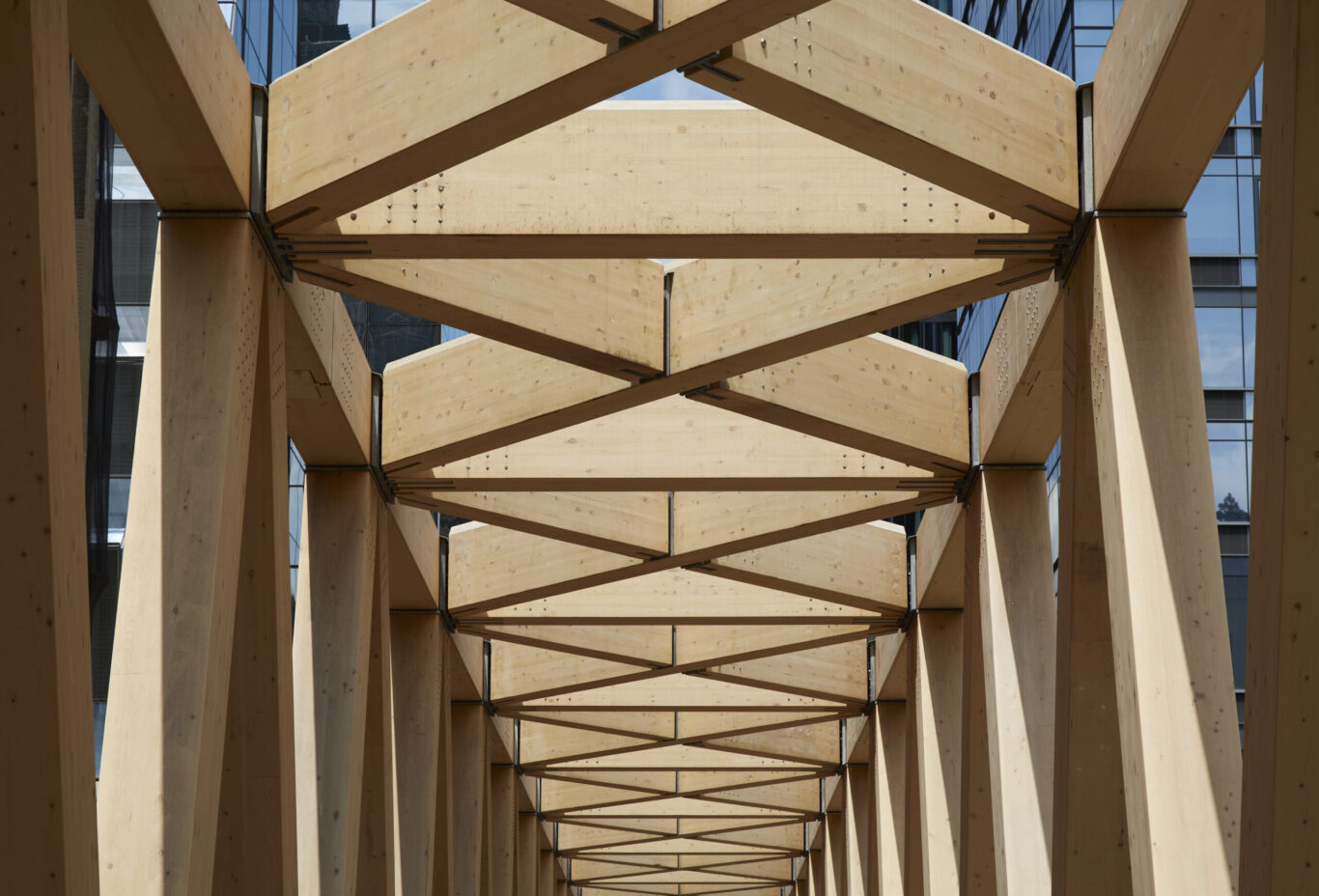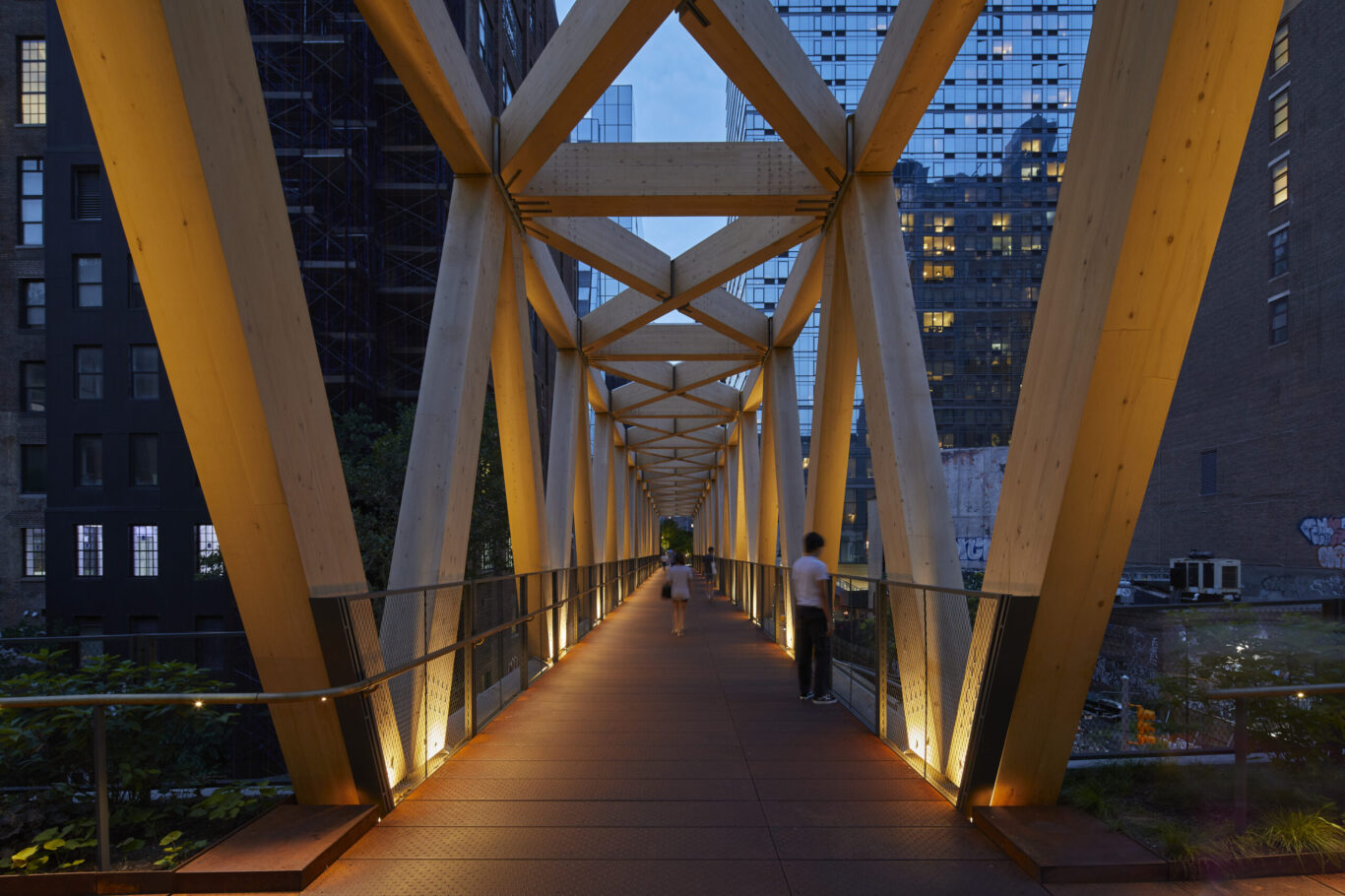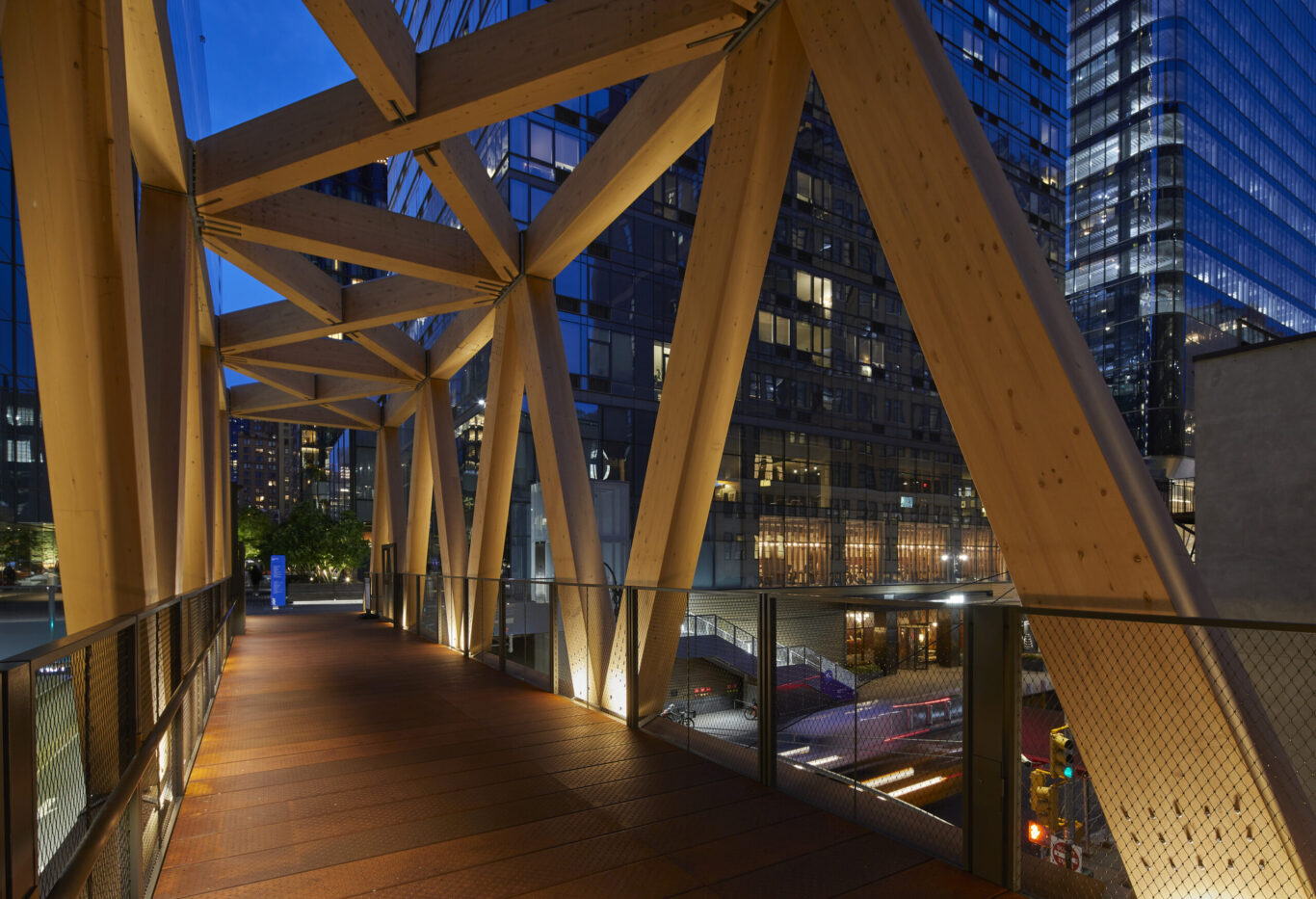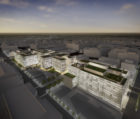Connecting Midtown West
The High Line – Moynihan Connector—led by Empire State Development, Brookfield Properties, and Friends of the High Line—is part of a long-standing vision to create safer, more enjoyable pedestrian access, connect people to transit, and seamlessly link public open spaces and other community assets in the neighborhood. As the latest chapter in the decade-long evolution of Midtown West in New York City, including the redevelopment of Penn Station, the adaptive reuse of the Farley Building into Moynihan Train Hall with offices above, and the creation of Manhattan West and Hudson Yards, the neighborhood has emerged as a new mixed-use destination knit together by a series of civic spaces that will now be connected to the High Line—one of the most important public spaces and pedestrian paths in New York City.




